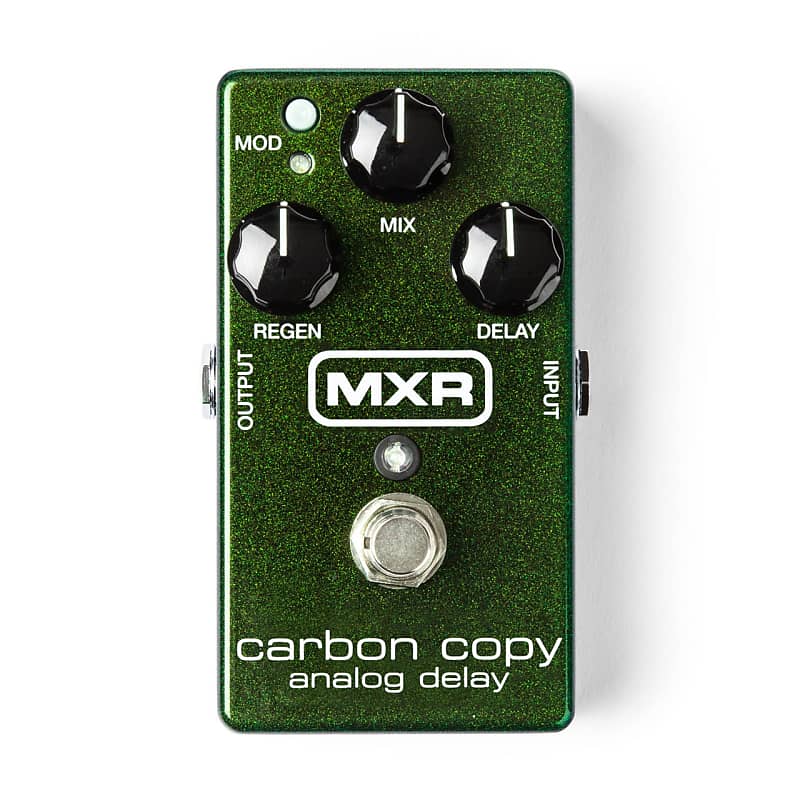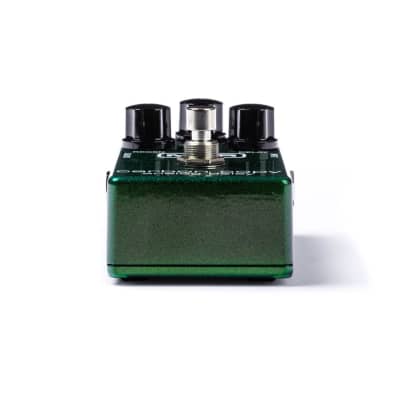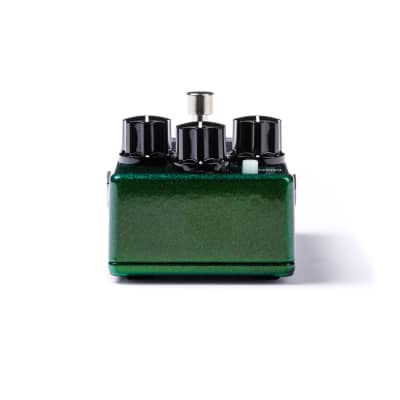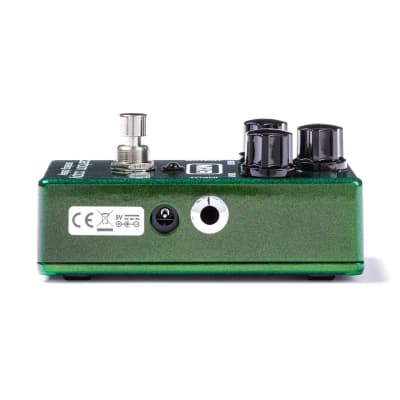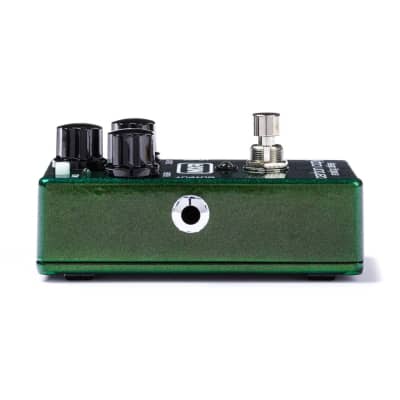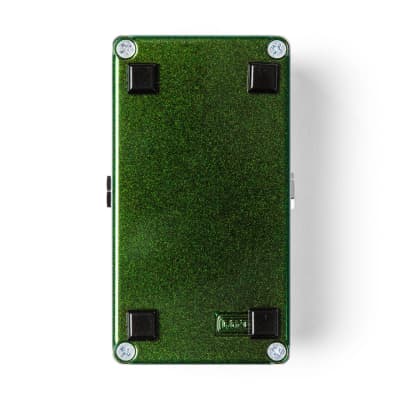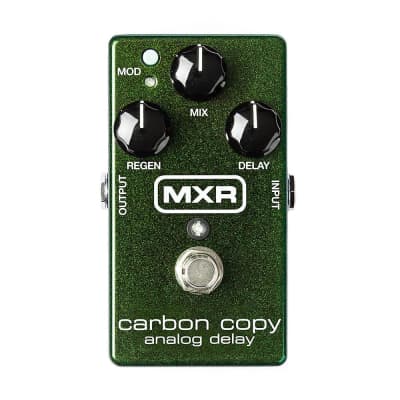MXR® CARBON COPY® ANALOG DELAYM169
The Carbon Copy Analog Delay delivers rich, warm bucket-bridgade delay with up to 600ms of delay time and modulation.
This pedal can be powered by a 9-volt battery, a Dunlop ECB003 9-volt adapter, or the DC Brick™, Iso-Brick™, and Mini Iso-Brick™ power supplies (not included).
Go from crisp "bathroom" slap echoes to epic, Gilmouresque delays with the MXR Carbon Copy Analog Delay. Featuring 600ms of delay time with optional modulation, and a three-knob layout that controls Delay, Mix, and Regen. In addition, there are two internal trim pots that offer user-adjustable width and rate control of the modulation for even more tonal options. All done by a completely analog audio path for authentic rich, warm analog delay—made possible only by old-school analog bucket brigade technology. True bypass.
ON A DIFFERENT FREQUENCY: SIX REASONS YOU NEED AN EQ PEDALby Dunlop Staff Contributor// MXR08-25-2023CATEGORIESMOST RECENTARCHIVE
What is an EQ pedal? A tone shaper, surely. But they can be much more than that.
MXR® offers two great options: the Six Band EQ and the Ten Band EQ. Modern classics, both feature noise-reduction circuitry, true bypass switching, brighter LEDs for increased visibility, and a lightweight aluminum housing. The Six Band covers all the essential guitar frequencies, from 100Hz to 3.kHz, while the Ten Band EQ gives you control over a wider range, from 31.25Hz to 16kHz—perfect for bass players and extended range guitar players.
With these pedals in mind, we talked to the gigging and recording musicians on our team and collected a list of compelling reasons that show why you should have an EQ pedal at all times.
MATCH UP WHEN YOU MAKE THE SWITCH
If you use multiple instruments during a show, or even during a recording session, having an MXR Six Band EQ or MXR Ten Band EQ can save you a lot of time you’d otherwise spend reconfiguring your settings every time you make the swap.
Let’s say you’re switching from an active bass to a passive bass. Or from a guitar with single-pickups to a guitar with humbuckers. Or even from an electric guitar to an acoustic one. That’s going to change up the overall sound of your signal chain.
But with an EQ pedal, you can adjust the frequencies—and input and output with the MXR Ten Band EQ—as needed to keep a consistent sound. Just set the sliders where you need them to make the second instrument match, and then kick the pedal on when it’s time to make the switch.
SHAPE EFFECTS
Sometimes, the EQ controls on a pedal just don’t give you enough control. Or a pedal might not offer any tone shaping at all. Putting an MXR Six Band EQ or MXR Ten Band EQ pedal in front of or after that effect, or even a group of effects, will allow you to create the exact sound you want to hear.
Want to tighten up a fuzz? Put your EQ pedal after it, and try cutting lower frequencies. Or give your overdrive and distortion pedals extra punch and presence by boosting the midrange. In other instances, you might want the EQ to come first—namely, when you want to control what the input signal is feeding into a particular effect. Experiment, and discover which setups work for you and your sound.
AN EXTRA PREAMP FOR YOUR AMP STACK
At the end of your signal chain, just before your amp, the MXR Six Band EQ and MXR Ten Band EQ pedals shape everything that comes before—it’s like having an extra preamp. A pre-preamp, if you will. Sometimes, effects combos become unruly and imbalanced. An EQ pedal allows you to shape it all into a more cohesive sound before your amp works its magic.
Relatedly—if you have an amp that’s prone to tubby or thin sounds, placing an EQ pedal in the FX loop allows you to do some “under-the-hood” tweaks to pull off your perfect sound.
POP THOSE LEADS
The MXR Six Band EQ and MXR Ten Band EQ—especially the Ten Band—can be used to draw all focus to your fancy leads. On the Six Band, just boost and cut the frequencies you need to make your notes stand out in a mix. With the Ten Band, do the same, but with Volume and Gain sliders, it’ll boost your whole signal into the stratosphere if you want it do. Just, you know, make sure that’s cool with your bandmates.
